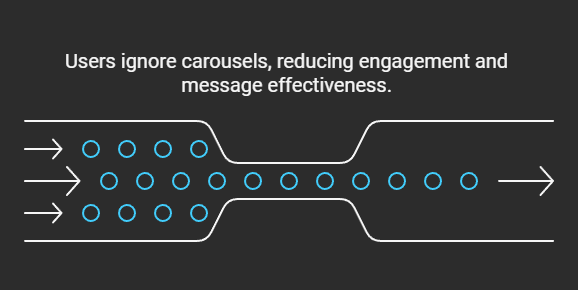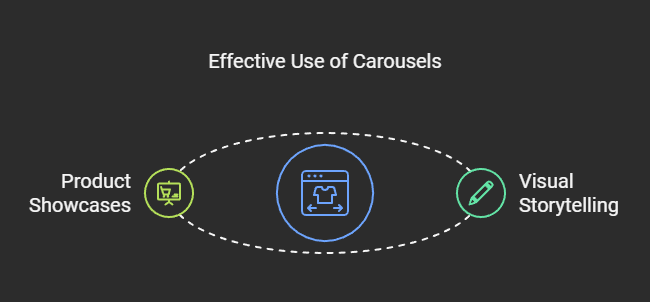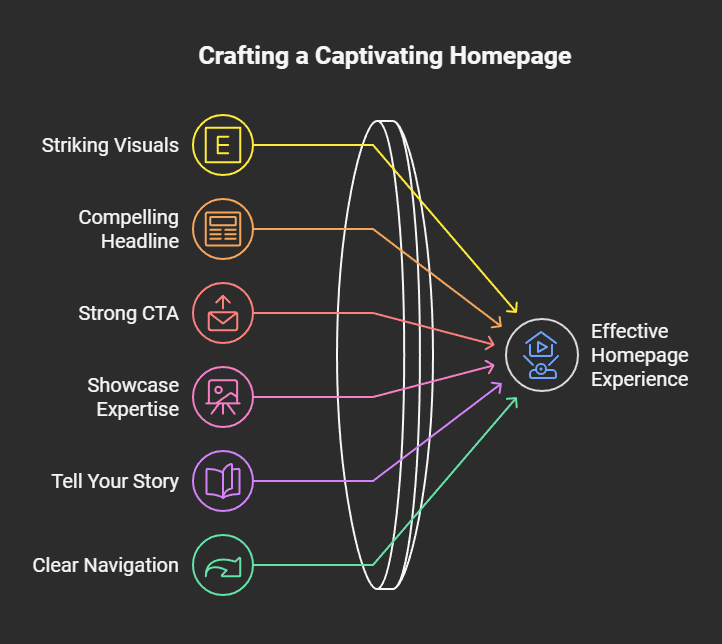As a web designer, I’ve had the pleasure of working with many fantastic online businesses. One recent project involved a client who, like many business owners in Dorset, was convinced his homepage carousel was a key driver of engagement. He believed those rotating images showcasing his top products were crucial for capturing attention and driving conversions.
But my experience, particularly with small to medium-sized businesses (SMBs), has taught me that carousels often underperform and can even hinder a website’s success. I was determined to prove this to my client and help him achieve better results.
To make my case, I proposed a simple A/B test. We created two versions of his homepage: one with the carousel and one without. We then tracked key metrics like click-through rates, bounce rates, and conversions.
The results? They were remarkable.

The version without the carousel outperformed the original by a significant margin. We saw a 35% increase in conversions and a noticeable decrease in bounce rate. My client was thrilled! Not only had we improved his website’s performance, but we also freed up valuable time and resources that were previously spent on creating and managing those carousel slides. He could now focus on creating more valuable content and optimizing other areas of his website, such as improving his local SEO for Dorchester searches.
This experience reinforced my belief that carousels, while visually appealing, often fail to deliver on their promise. Let’s explore why.
The Carousel Conundrum: Why Sliders Often Fail
Carousels suffer from several key drawbacks:
- Banner Blindness: We’ve become so accustomed to seeing carousels (and banner ads) that we often subconsciously ignore them. Eye-tracking studies have shown that users tend to skim right past them, missing your key messages entirely.
- Cognitive Overload: Presenting visitors with multiple rotating messages can be overwhelming. Our brains aren’t wired to process so much information at once, leading to confusion and a poor user experience.
- Accessibility Issues: Carousels can be difficult for users with disabilities to navigate, especially those who rely on screen readers or have motor impairments.
- SEO Impact: Search engines prioritize clear, concise content. Carousels, with their rotating messages and hidden content, can confuse search engine crawlers, potentially harming your website’s ranking in local search results for Dorset businesses.
The Data Doesn’t Lie: Click-Through Rates and Mobile Performance
The evidence against carousels is compelling:
- Click-Through Rates (CTR): A study by Notre Dame University found that a mere 1% of visitors actually click on carousels. And of those clicks, a whopping 84% go to the first slide. So, what about the rest of your carefully crafted content? It’s practically invisible!
- Mobile Performance: In today’s mobile-first world, carousels often perform poorly on smaller screens. They can lead to slow loading times, frustrating users and potentially driving them away from your site. This is particularly crucial for businesses in Dorset, where many customers may be accessing websites on their mobile devices while on the go.
When Carousels Might Work (The Exceptions)
Of course, there are a few exceptions where carousels might be effective:
- Visual Storytelling: If you have a strong visual narrative that unfolds seamlessly across a few slides, a carousel could be a good option. But keep it concise, user-controlled, and visually stunning.
- Product Showcases: For e-commerce sites, a carousel showcasing a few locally sourced products or highlighting a special offer might be worthwhile. But again, simplicity and user-friendliness are key.

Beyond the Carousel: Creating a Truly Engaging Homepage
Instead of relying on a rotating slideshow, focus on crafting a captivating homepage experience:
- Hero Section: Make a strong first impression with a visually striking hero section. Use a high-quality image that showcases the beauty of your products, a compelling headline that clearly communicates your value proposition to local customers, and a strong call to action that encourages visitors to take the next step.
- Content is King: Showcase your expertise in your subject, tell your brand story, and build trust with your audience. Use clear and concise language, avoiding jargon and technical terms.
- Guide the Journey: Make it easy for visitors to navigate your website and find the information they need. Use a clear and logical navigation menu, strategic content placement, and multiple calls to action to guide them through your key offerings, for me is for example web design services for Dorset businesses.

The Bottom Line:
Focus on User Experience
Ultimately, the most effective websites are those that prioritize user experience. Carousels, while visually appealing, often fail to deliver on this front.
By ditching the carousel and focusing on creating a clean, concise, and engaging homepage experience, you can significantly improve your website’s performance and drive more conversions.
What are your thoughts on carousels? Have you seen them succeed (or fail)?
